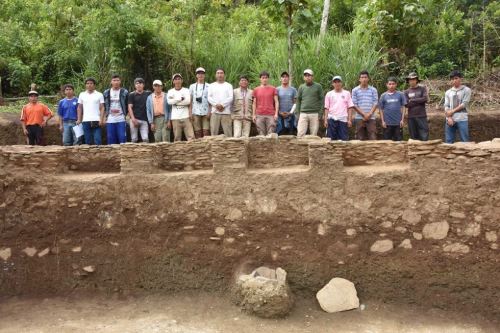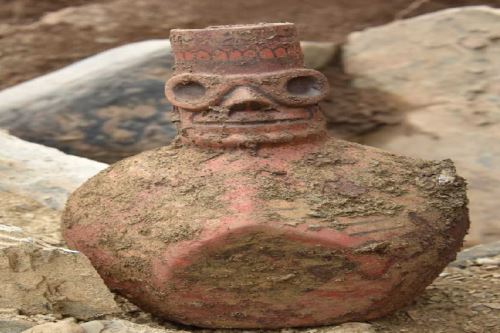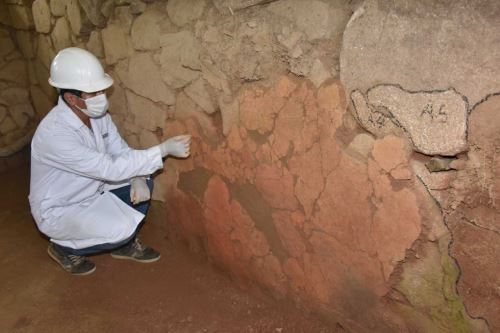Los muros de un enorme templo, tiene la forma de la letra D, lo que hace desprender que esta arquitectura es propia de la cultura Wari que se originó en Ayacucho y se extendió a la selva cusqueña.
14:03 | Cusco (Cusco region), Dec. 15.
Research works at Espiritu Pampa archaeological site in Southern Cusco region led to the discovery of an astronomical observatory, massive stone walls, as well as ceramics and other pieces of evidence of pre-Hispanic Wari and Inca cultures presence.
The finding was confirmed by State-run Decentralized Culture Directorate of Cusco (DDCC) specialists in charge of the research.

Head archaeologist Javier Fonseca shared details about the stone walls, which are part of a massive D-shaped temple.
This feature has led the experts to believe the architecture belonged to
Wari culture, a society that flourished in South-Andean Ayacucho region and stretched over
Cusco's rainforest.
A smaller —also D-shaped structure— was found at the center of the temple which —given its symbolic location— is believed to have served as an astronomical observatory for Wari's magical-religious rituals.

The team also discovered two spaces built with small stones within the temple. Tooth fragments of some sort of local animal were found in the first one; as well as two
Wari style ceramic bottles, a silver chest plate, and a silver crown or headdress in the second.

One of the bottles features a human face with big eyes, a nose, and a mouth. But the most remarkable feature is the crown painted over its head: a sign that the area housed elite government figures during Wari's zenith.

In addition, the research team found evidence of Inca architecture with square and rectangular shapes beside the temple. One of the structures housed Inca tupus (pins), silver needles, and ceremonial pottery.

The said pre-Hispanic pieces will undergo a conservation process at DDCC's Physical Chemistry Unit for subsequent investigation.
(END) PHS/TMC/MAO/MVB
Published: 12/15/2017